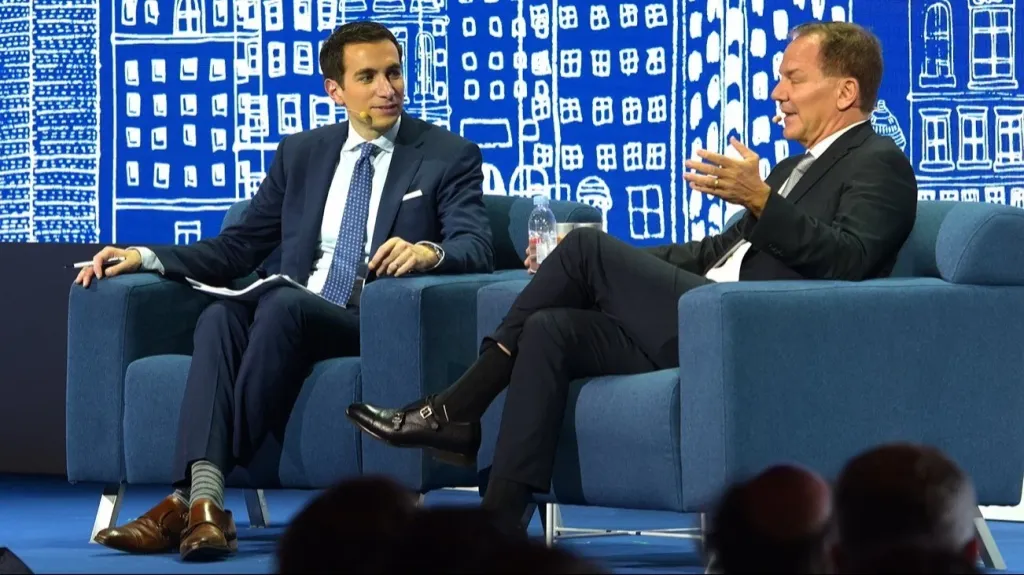'You have to get off this train in time': what's in store for the trader who predicted the 1987 crash?
The founder of Tudor Investment, who managed to make money on Black Monday, intends to combine gold, cryptocurrencies and technology stocks in his portfolio by the end of the year

The market is setting the stage for a powerful rally in stocks before the current bull cycle ends, according to billionaire hedge fund manager Paul Tudor Jones of Tudor Investment. Overall, he says, it's similar to the end of 1999, the period before the dot-com era collapsed. Jones recommends that investors "get on" and get off "that train" in time.
Details
Paul Tudor Jones, founder and fund manager of Tudor Investment, compares the current market situation to the rally before the dot-com crash. "I believe all the ingredients are on the table for some sort of 'explosive growth,'" Jones told CNBC on Oct. 6. - History often rhymes, so I think something like this will happen again. If anything, the potential is much more explosive now than it was in 1999."
The billionaire noted that the current market situation is reminiscent of the period before the collapse of the dot-com bubble in late 1999, when tech stocks were still showing sharp gains and speculative sentiment was on the rise. Jones added that "round-robin deals" and financing schemes between vendors in the artificial intelligence space are "troubling" to him.
The Nasdaq Composite index of technology stocks has risen 55% since April, hitting all-time highs several times. The growth was driven by major technology corporations that have invested billions of dollars in AI development, CNBC explains.
Is it all so much like the dot-com crisis
It took about five months from the first week of October 1999 to the peak of the Nasdaq Composite index, during which it nearly doubled, MarketWatch writes. According to Dow Jones Market Data, the Nasdaq closed at 5,048.6 points on March 10, 2000 - up 84.5% from October 1, 1999. After that, the index lost about 80% of its value, hitting bottom by the end of 2002.
The difference between the current cycle and 1999, according to Jones, is the policy of the authorities. The Federal Reserve has now started a new easing cycle, whereas in 2000 it was preparing to raise rates. At the same time, the US now has a budget deficit of about 6% of GDP, whereas in 1999 there was a surplus of $99 billion.
"This mix of fiscal and monetary policy is a mix we haven't seen perhaps since the postwar period, the early 1950s," he said.
The experienced investor emphasized a contradiction inherent in the late stages of bull markets: the desire to extract super profits is inevitably accompanied by the risk of a painful correction.
What investors should do
"This is a train you have to jump on and get off in time," Jones said. - If you look at bull markets, the biggest price increases are always in the 12 months leading up to the peak. Gains during that period are usually about double the annual average, and if you don't participate, you're missing the 'juice,' but if you do participate, you have to be able to move fast because it's going to end very, very badly."
At the same time, Jones does not expect an immediate market reversal. He believes that the bullish trend has not yet reached its final stage.
"It will take a real speculative fever for prices to go even higher. More retail investors have to come in, as well as new entrants from hedge funds to institutional players," he said.
Jones said he intends to hold a mix of gold, cryptocurrencies and technology stocks from the Nasdaq index in his portfolio through the end of the year to take advantage of a rally fueled by fear of missing out on gains.
Paul Tudor Jones gained fame after predicting one of the worst U.S. stock market crashes (Black Monday in October 1987) and capitalizing on it. He is also co-founder of Just Capital, a non-profit organization that evaluates publicly traded U.S. companies on social and environmental performance.
This article was AI-translated and verified by a human editor
